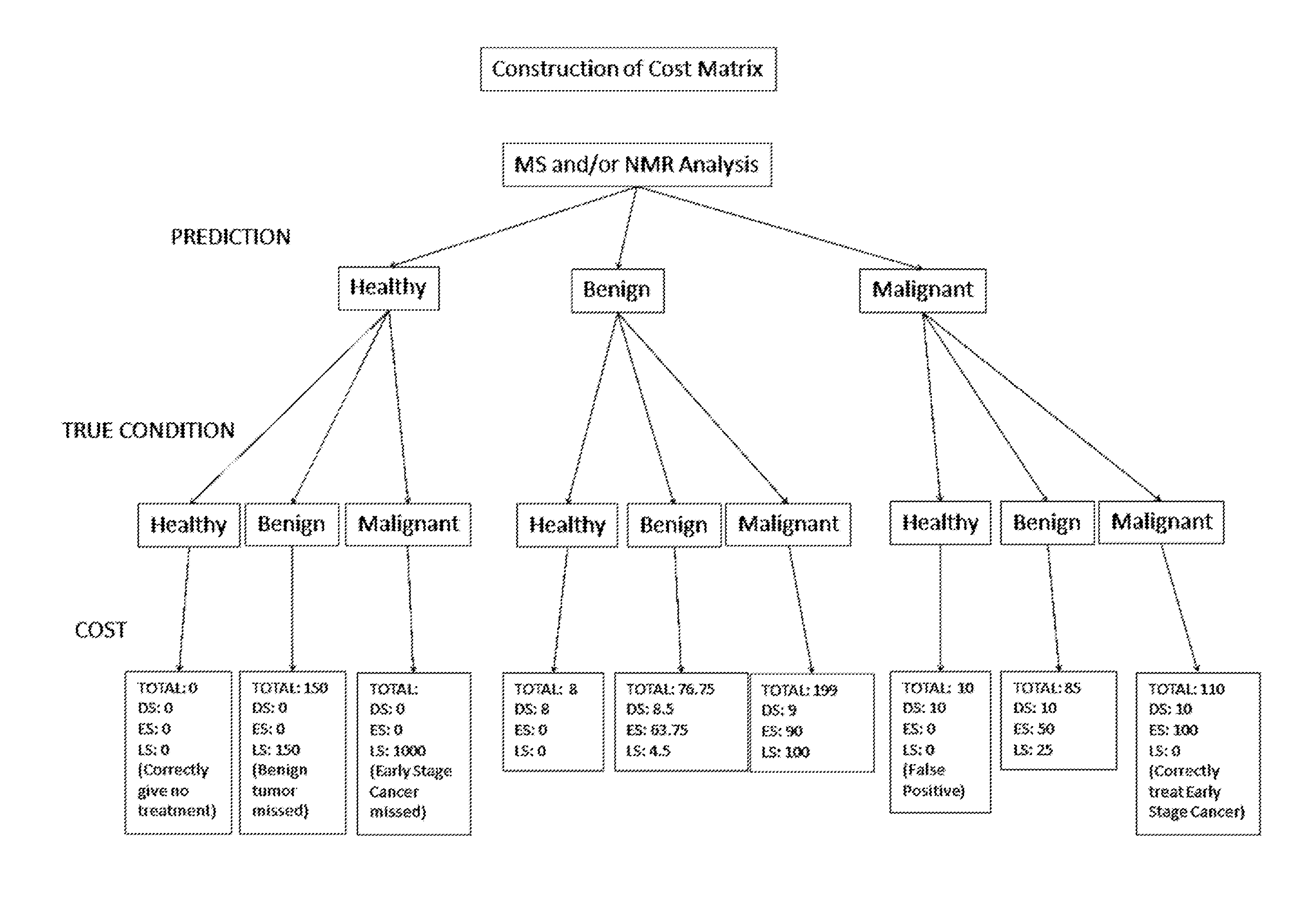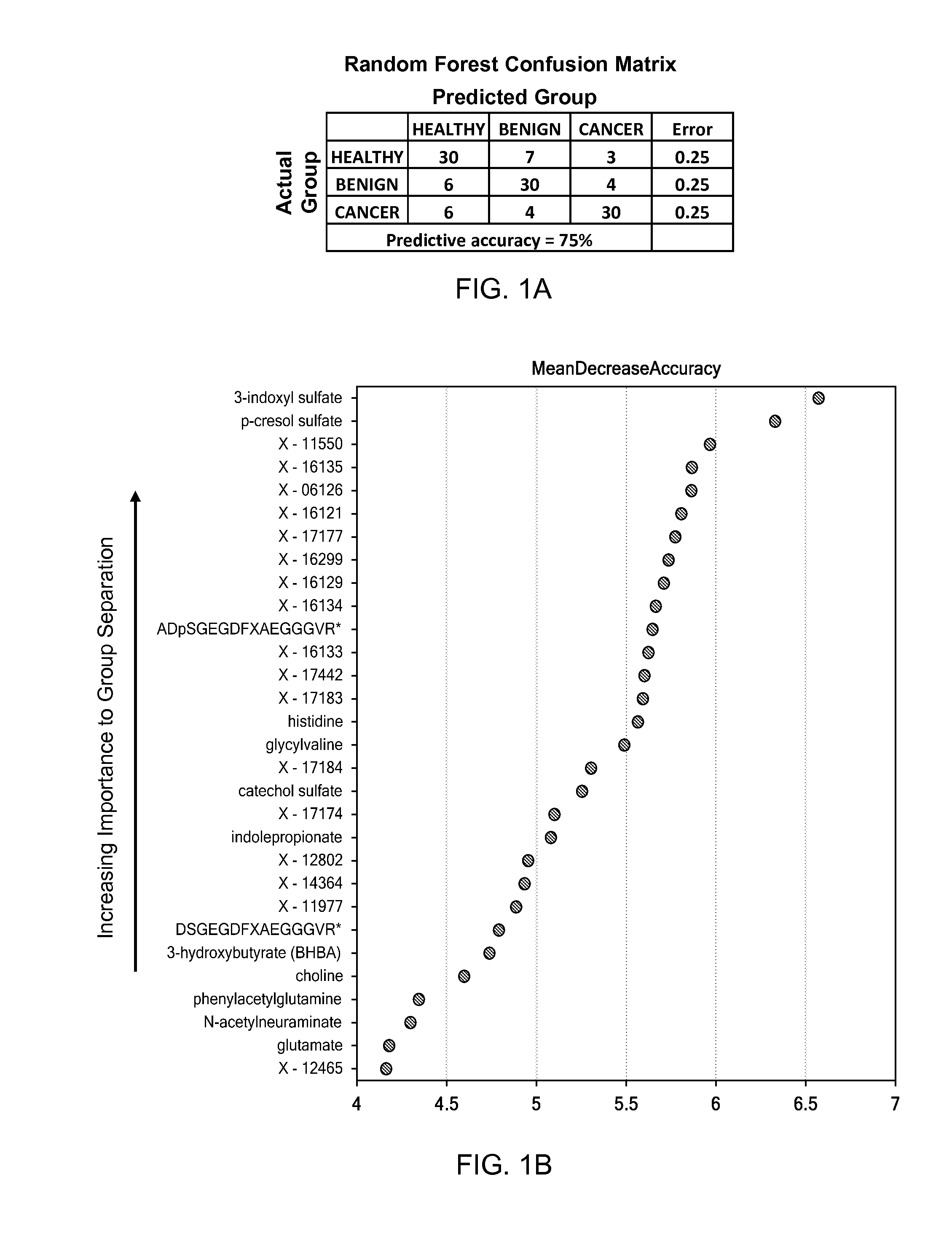Methods for generating predictive models for epithelial ovarian cancer and methods for identifying eoc
a predictive model and epithelial ovarian cancer technology, applied in the field of generating and using predictive models for identifying epithelial ovarian cancer, can solve the problems of particularly devastating for women of high school age, the lack of an efficient approach to detect eoc at an early stage, and achieve the effect of improving predictive accuracy
- Summary
- Abstract
- Description
- Claims
- Application Information
AI Technical Summary
Benefits of technology
Problems solved by technology
Method used
Image
Examples
first exemplary embodiment
[0041]Serum Specimens
[0042]Serum specimens were obtained from Gynecologic Oncology Group (“GOG”) protocol 136, titled “acquisition of human ovarian and other tissue specimens and serum to be used in studying the causes, diagnosis, prevention and treatment of cancer.” A first set of specimens (˜200 μL each) contained 120 samples from early stage I / II EOC patients, 91 from patients with benign tumors, and 132 from healthy women. A second set of specimens (100 μL each; “validation” set) included 50 samples from stage I / II EOC patients and 50 from healthy women. All experimental protocols were approved by the Institutional Review Board at the State University of New York at Buffalo.
[0043]Mass Spectrometry (“MS”)
[0044]MS Sample Preparation
[0045]Out of the first set of 343 specimens, 40 samples from early stage I / II EOC patients, 40 from patients with benign tumors, and 40 from healthy women were selected to acquire MS profiles. For these 120 specimens, an aliquot of 100 μL of each NMR sa...
PUM
 Login to View More
Login to View More Abstract
Description
Claims
Application Information
 Login to View More
Login to View More - R&D
- Intellectual Property
- Life Sciences
- Materials
- Tech Scout
- Unparalleled Data Quality
- Higher Quality Content
- 60% Fewer Hallucinations
Browse by: Latest US Patents, China's latest patents, Technical Efficacy Thesaurus, Application Domain, Technology Topic, Popular Technical Reports.
© 2025 PatSnap. All rights reserved.Legal|Privacy policy|Modern Slavery Act Transparency Statement|Sitemap|About US| Contact US: help@patsnap.com



